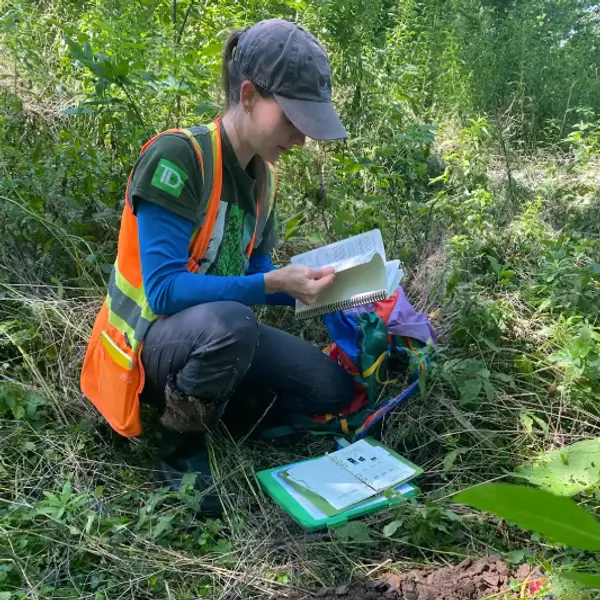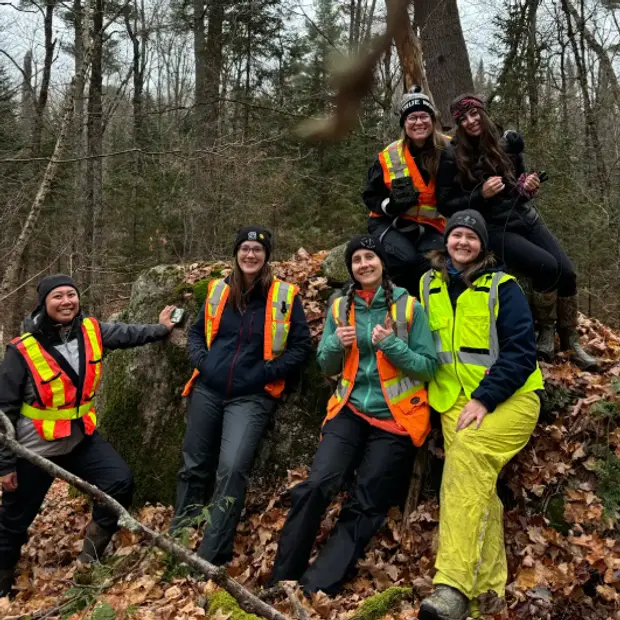Environmental Impact Assessment
Ecological and policy expertise for Environmental Impact Studies (EIS, NHIS) that lead the way for resilient futures.
We conduct comprehensive assessments of wetlands, woodlands, and other natural features utilizing our proven in-house methodologies combined with cutting-edge GIS technology.
Working with planners, developers, agencies, and engineers, we offer nature-based solutions so that your projects, and local ecology, thrives.

Keeping your project moving
Environmental compliance can be a launchpad to put ecology at the center of your project.
Designing win-win solutions begins with pre-development planning:
- Practicing due diligence to identify known and likely risks and create Terms of Reference
- Documenting biodiversity and how it will respond to site alteration
- Offering nature-based solutions to integrate into planning, so projects start off right and stay on track
Planning phase:
- Assess risks and impacts in order to find solutions that work for you
- Conduct field investigations to determine existing site conditions, including vegetation and wildlife surveys, species-at-risk screening, and boundary delineation of wetlands and woodlands
- Collaborate to propose nature-based solutions in response to impact analysis
- Generate strategic Environmental Impact Studies
- Work with planners, architects, and engineers to develop plans and solutions that work with the ecology of the site.
- Delivery of technical reporting to facilitate minimal review time and solutions-based negotiations
Site plan approval:
- Support implementation of recommendations
- Custom design services
- Monitoring to meet restoration goals and meet agency or permit requirements

Meet our team of specialists
Our multi-disciplinary team specializes in Environmental Impact Statements for:
- Private land development
- Municipal parks, green infrastructure and urban forestry
- Municipal road widening, bridge construction, trunk sanitary sewers
Transforming landscapes for the future
Meeting policy standards is a first step in achieving a thriving ecology in your spaces. Let us help you get there.

Frequently asked questions about Environmental Impact Assessments
An EIA or EIS typically includes:
- Site assessments (e.g., wetlands, woodlands, wildlife habitat)
- Species-at-risk screening and habitat analysis
- Mapping and boundary delineation of natural heritage features
- Impact analysis and mitigation design
- Restoration or compensation recommendations
- Policy compliance and technical reporting
Our reports are tailored to project needs, whether commercial, mining, or industrial, and meet municipal and provincial standards.
An Environmental Impact Assessment (EIA) or Environmental Impact Study (EIS) evaluates how a proposed development or site alteration will impact environmental features and functions. Dougan Ecology prepares EIS reports to assess risk, analyze impacts, and recommend nature-based solutions. Our team uses advanced field methods, GIS mapping, and stakeholder input to deliver robust and successful environmental assessments.
Though the terminology varies, Environmental Impact Studies (EIS), Environmental Impact Assessments (EIA), and Natural Heritage Impact Studies (NHIS) all serve a similar function: to evaluate how a development may impact natural heritage features and to propose mitigation. Naming often depends on the agency or approval context.
The Terms of Reference define the scope, methodology, and expected deliverables of an EIA or EIS. Dougan Ecology collaborates with regulators to ensure TORs address all environmental concerns relevant to the site and jurisdiction, including biodiversity, habitat function, and species-at-risk.
Wetland delineation identifies and maps wetland boundaries based on vegetation, soils, and hydrology. This process is critical for EIS submissions and site planning. Our staff conduct delineations following provincial protocols, supported by GPS and GIS mapping tools.
Mitigation strategies aim to avoid, minimize, or offset ecological impacts. At Dougan Ecology, we prioritize nature-based solutions, ecological restoration, and low-impact design. These strategies are essential for meeting environmental regulations while supporting project objectives.
Natural heritage features like wetlands, forests, and meadows support essential ecosystem services such as biodiversity, water filtration, and climate regulation. Protecting these features ensures long-term environmental sustainability and compliance with provincial planning frameworks.
